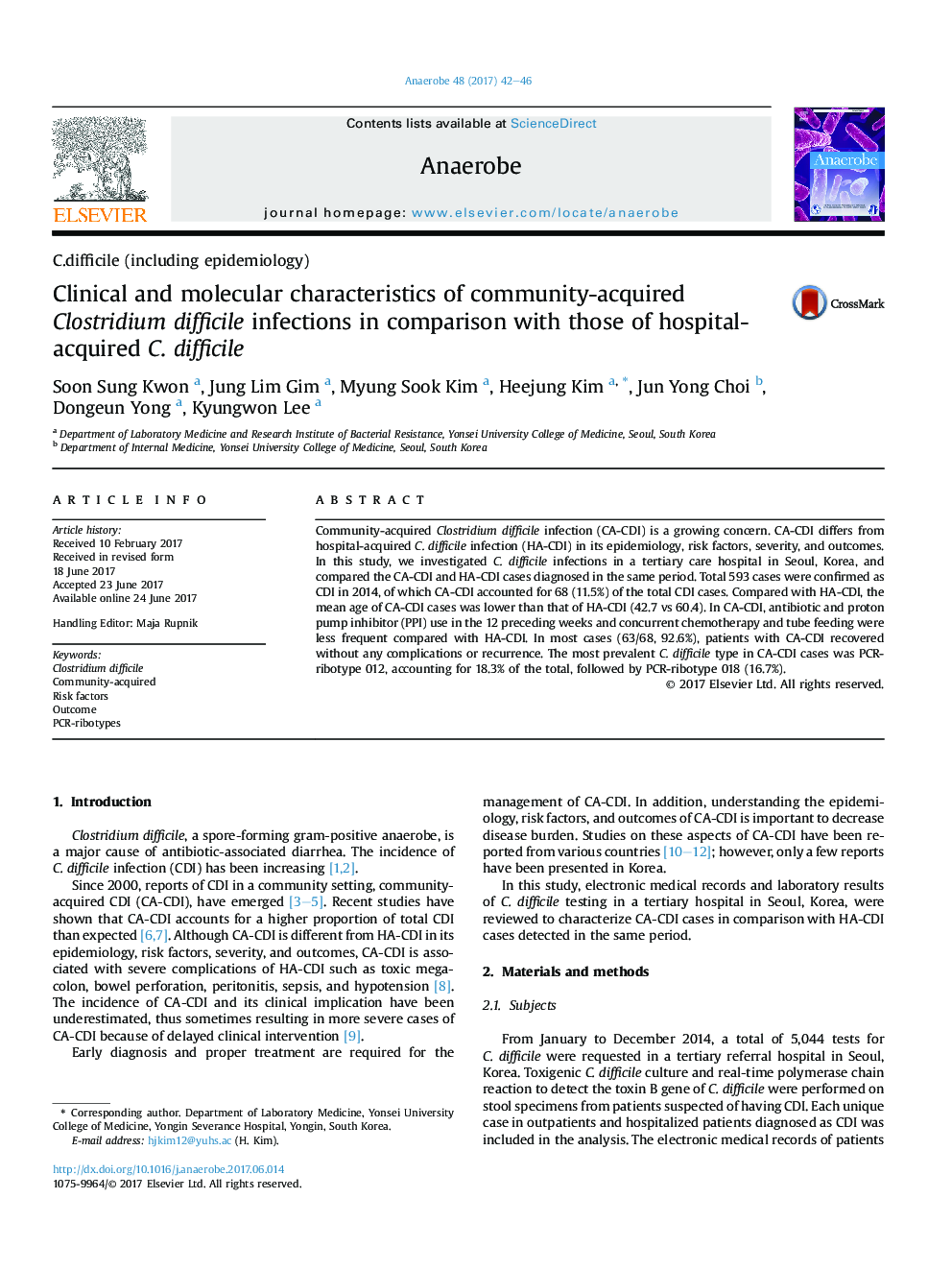| Article ID | Journal | Published Year | Pages | File Type |
|---|---|---|---|---|
| 5671349 | Anaerobe | 2017 | 5 Pages |
â¢Community-acquired Clostridium difficile infection accounted for 11.5% of the total CDI at a tertiary care hospital.â¢CA-CDI lacks the traditional risk factors of hospital-acquired CDI.â¢The most prevalent strain of C.difficile in community is PCR ribotype 012.â¢Most CA-CDI cases are mild and recovered without complications.
Community-acquired Clostridium difficile infection (CA-CDI) is a growing concern. CA-CDI differs from hospital-acquired C. difficile infection (HA-CDI) in its epidemiology, risk factors, severity, and outcomes. In this study, we investigated C. difficile infections in a tertiary care hospital in Seoul, Korea, and compared the CA-CDI and HA-CDI cases diagnosed in the same period. Total 593 cases were confirmed as CDI in 2014, of which CA-CDI accounted for 68 (11.5%) of the total CDI cases. Compared with HA-CDI, the mean age of CA-CDI cases was lower than that of HA-CDI (42.7 vs 60.4). In CA-CDI, antibiotic and proton pump inhibitor (PPI) use in the 12 preceding weeks and concurrent chemotherapy and tube feeding were less frequent compared with HA-CDI. In most cases (63/68, 92.6%), patients with CA-CDI recovered without any complications or recurrence. The most prevalent C. difficile type in CA-CDI cases was PCR-ribotype 012, accounting for 18.3% of the total, followed by PCR-ribotype 018 (16.7%).
